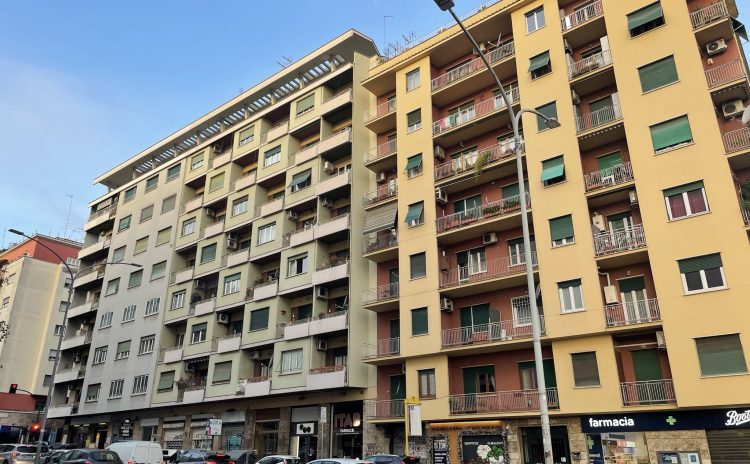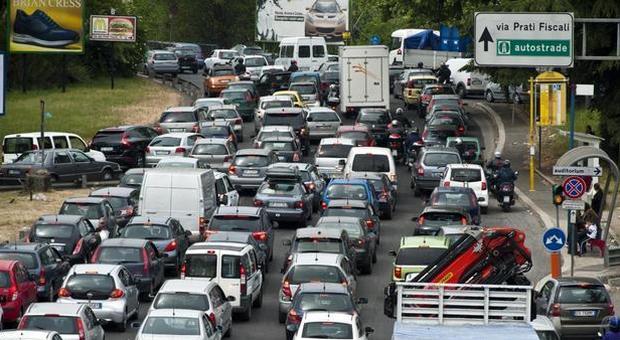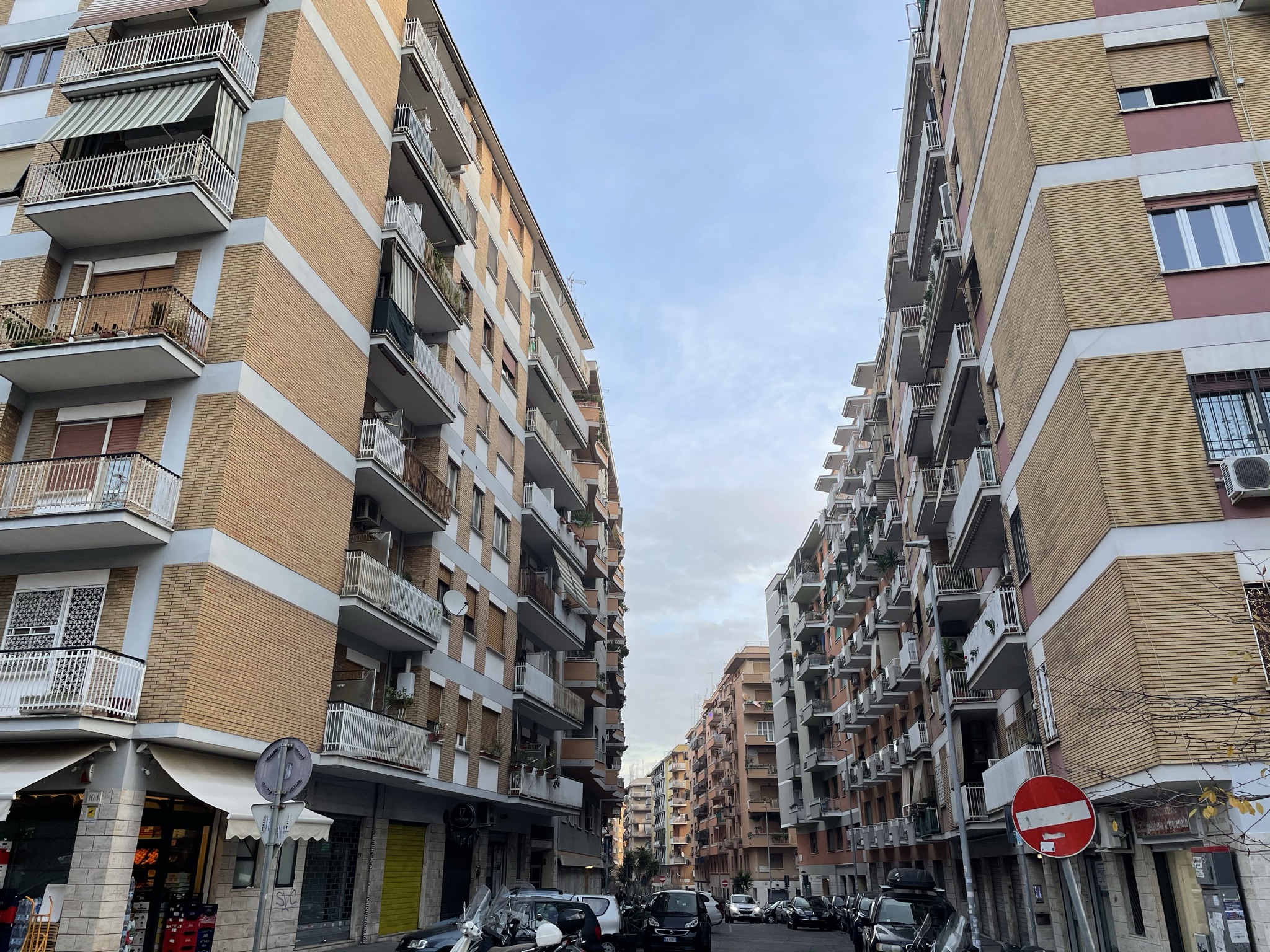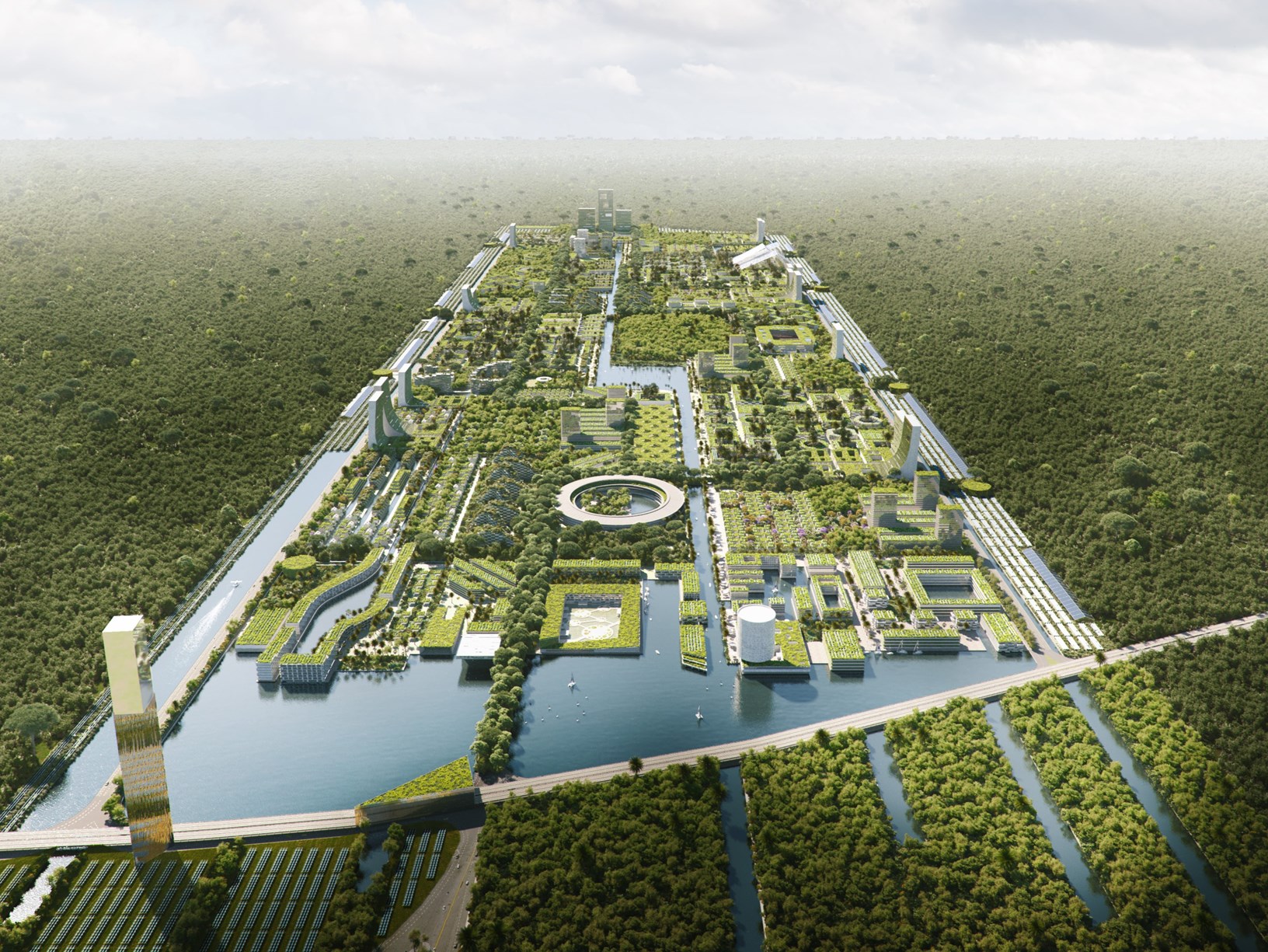Lo smart working e la fine delle metropoli?
Smart working and the end of metropolis?
- 10 Gen 2021

Pensiamo per un attimo ad una grande città e guardiamo gli immensi caseggiati davanti ad isole ecologiche per lo più spesso ricolme di rifiuti. Soffermiamoci ad osservare il flusso di auto che si incanala dalla periferia alla città con uomini e donne assonnati e tristi costretti ad alzarsi ad ore impossibili ed a trascorrere inutilmente in auto ore preziose della loro unica esistenza solo per arrivare al posto di lavoro. Pensiamo alle migliaia di studenti fuori sede costretti a convivere in affollate stanze in affitto in case fatiscenti a prezzi assurdi e spesso in nero. Pensiamo alle imprese costrette a “buttare” letteralmente via parte dei loro ricavi in affitti esorbitanti in immensi palazzi ad uffici investendo cifre assurde in riscaldamento, energia elettrica e manutenzione invece di indirizzarle in ricerca e sviluppo o in nuova forza lavoro.

Sorge allora spontanea una domanda: “Perché ancora sprecare così tanto tempo prezioso e denaro per vivere, studiare o lavorare in una grande città?”
Ci verrebbe da rispondere perché qui ci sono i servizi. Ci sono scuole, supermercati, centri commerciali, ospedali, università riconosciute a livello nazionale o internazionale.

Ma se tralasciamo un attimo attività come quelle sanitarie, che comunque richiedono una presenza che ci si augura la più temporanea possibile, ci si rende conto che tutti i servizi, sono ora, di fatto, digitalizzabili e tale condizione rende la possibilità di accedere e di fruire degli stessi in maniera uniforme senza vincoli di spazio e di tempo a livello globale. La connettività digitale abilita infatti nuovi modi di vivere e lavorare: lo smart working cambia il concetto stesso di ufficio, la didattica a distanza trasforma i poli universitari e gli studentati, le stesse strutture sanitarie saranno destinate a cambiare. Con la più grande sperimentazione di massa dell’insegnamento on line collegata all’epidemia di COVID-19 si è infatti resa diffusa la possibilità a tutti di poter frequentare le Università, anche le più prestigiose, senza essere costretti ad andarci fisicamente, abbassando i costi fissi e, quindi, anche aiutando, conseguentemente, a ridurre le differenze sociali. Finalmente si è potuto sperimentare in modo estensivo l’utilizzo di market place mondiali con una disponibilità di beni praticamente infiniti ed in grado di poter rispondere alla domanda in tempi sempre più rapidi e quasi istantanei. Finalmente il lavoro è stato reso libero di autorganizzarsi e di rilocalizzarsi in un luogo virtuale dove non si timbra più il cartellino ma si dà conto “soltanto” dei risultati. Per la prima volta, nel tanto bistrattato 2020, le persone hanno scoperto anche la possibilità addirittura di lavorare da luoghi di vacanza con il pc. Nonostante il distanziamento sociale, nel complesso, la gente ha comunque sicuramente avuto la possibilità di vivere una vita più sensata in luoghi più salubri. Una vita, per assurdo, più umana. Dal canto loro le aziende hanno finalmente iniziato a farsi i conti. Con il dipendente in collegamento su Teams o su Zoom dalla casa si risparmia sull’affitto, sui costi legati alla gestione del personale ed alla sicurezza dei luoghi di lavoro, sulle infrastrutture informatiche, sulla bolletta della luce e le pulizie… .
Tutto questo, tutti gli investimenti fatti, tutta questa nuova consapevolezza sul senso dell’esistenza non potrà scomparire con la vaccinazione di massa. Ci saranno trasformazioni. Ci saranno fenomeni di rigurgito e di ritorno all'”insensatezza” economica ante COVID ma non si potrà ritornare indietro.
Ed anche il senso di vivere (o sopravvivere?) in una metropoli inquinata verrà ad essere messo necessariamente in discussione. Ovviamente, come tutto quanto collegato ai fenomeni di trasformazione urbana ed alle resistenze connesse alle strutture edilizie presenti nonché agli interessi economici maturati, i tempi saranno lunghi, con soliti intervalli evolutivi minimi di 20-30 anni. Tale situazione sarà correlata anche ai tempi fisiologici, soprattutto in Italia, dei trasferimenti delle proprietà degli immobili stessi per esaurimento di una generazione di utenti ed il passaggio alla successiva.
Si potranno considerare comunque anche degli effetti a breve/medio termine sul mercato immobiliare (0-10 anni) che dovrà confrontarsi con questa condizione. La qualità della casa (risparmio energetico e sicurezza strutturale compresi) comincerà ad essere un elemento discriminante al pari e, in casi sempre più numerosi, anche più importante rispetto alla sua localizzazione. Una perdita di valore di immobili con standard abitativi bassi sarà certamente inevitabile anche a prescindere della loro vicinanza al centro delle città. Gli immobili di fascia alta sono gli unici per cui è prevedibile che non si generi una diminuzione dei prezzi di vendita e di affitto, la carenza di spazi di buona qualità è e sarà sempre più percepita come un problema sia dagli investitori, sia dagli inquilini, sia dalle istituzioni. Maggiore interesse sarà orientato verso gli immobili indipendenti (ville e villini) e si svilupperanno nuove nicchie di mercato che presentano un potenziale (es. strutture di assistenza sanitaria e sociale, data center, co-housing, co-working). La crisi sanitaria ha poi reso evidente il ruolo delle strutture di cura, dei centri di ricerca nonché la necessità di modernizzazione delle strutture ospedaliere.
In tal senso le attuali politiche connesse alla creazione di infrastrutture digitali, al 5G ed al recupero di funzionalità ed efficienza degli immobili (Ecobonus, Sismabonus) sono pienamente in linea con le modifiche della prospettive di domanda del settore immobiliare.
Si rivaluteranno certamente i centri minori e le cittadine limitrofe alle grandi città (ma anche con un aumento delle distanze rispetto ai limiti standard (1 ora) del pendolarismo), cablati (smart city) e con i servizi sanitari base disponibili. Interesse maggiore sarà orientato verso centri abitati dotati di un clima mite e che permetta di usufruire di spazi aperti per la maggior parte dell’anno e quindi sicuramente le località turistiche sul mare fino ad ieri sempre più abbandonate ad esistere, caoticamente, solo d’estate.
In parte si rivaluteranno anche i borghi, soprattutto quelli orbitanti a cittadine maggiori, ma solo se dotati di un cablaggio digitale accettabile.
A lungo termine, probabilmente, si inizierà a ripensare ed riportare le metropoli verso una configurazione più rispettosa dell’uomo e dell’ambiente.

Smart Forest City – Cancún
Forse, finalmente, oltre a straparlare di “agritettura”, di materiali sostenibili, di Green Building si inizierà anche ad abbattere i palazzi ed a ritrasformali in luoghi dove la natura potrà ritrovare una sua destinazione, ponendo fine, in quanto economicamente non più vantaggiosa, alla logica insensata della speculazione edilizia fine a se stessa.
 Ing. Paolo Croce- ZED PROGETTI srl
Ing. Paolo Croce- ZED PROGETTI srl
Let’s think of a big city and look at the immense blocks of flats or let’s pause to observe the flow of cars that funnel from the suburbs to the city with sleepy and sad men and women forced to get up at impossible hours and spend unnecessarily precious hours of their only existence in the car just to get to work. Let’s think of the thousands of out-of-town students forced to live in crowded rented rooms in crumbling houses at absurd prices and often with rent under the table. Let’s think of the companies forced to literally “throw away” part of their revenues in exorbitant rents in immense office buildings, investing absurd amounts of money in heating, electricity and maintenance instead of directing them to research and development or to a new workforce.
A question then arises: “Why still waste so much precious time and money to live, study or work in a big city?”
We would be forgiven for answering because the services are here. There are schools, supermarkets, shopping centers, hospitals, nationally or internationally recognized universities.
But if we leave aside for a moment activities such as health care, which in any case require a presence that we hope will be as temporary as possible, we realize that all services are now, in fact, digitizable and this condition makes it possible to access and use them in a uniform manner without constraints of space and time at a global level. In fact, digital connectivity enables new ways of living and working: smart working changes the very concept of the office, distance learning transforms universities and student halls of residence, and even healthcare facilities are destined to change. With the largest mass experimentation of online teaching linked to the COVID-19 epidemic, the possibility of attending universities, even the most prestigious ones, without being forced to go there physically has become widespread, lowering fixed costs and, therefore, also helping to reduce social differences. Finally, it has been possible to experiment extensively the use of world market places with a practically infinite availability of goods and able to respond to demand in increasingly rapid and almost instantaneous times. Finally the job has been rendered free to self-organize and to rilocalizzarsi in a virtual place where it is not stamped more the card but it is given account “only” of the results. For the first time, in the much bistrattato 2020, the persons have discovered also the possibility even to work from vacation places with the PC. In spite of the social distancing, on the whole, people have certainly still had the chance to live a more sensible life in healthier places. A life, absurdly, more human. For their part, companies have finally started to get their act together. With the employee connected to Teams or Zoom from home, they save on rent, on costs related to personnel management and workplace safety, on IT infrastructure, on electricity bills and cleaning…
All this, all the investments made, all this new awareness of the meaning of existence will not disappear with mass vaccination. There will be transformations. There will be phenomena of regurgitation and return to the economic “senselessness” before COVID, but there will be no turning back.
And also the sense of living (or surviving?) in a polluted metropolis will necessarily be questioned. Obviously, like everything connected to the phenomena of urban transformation and to the resistances connected to the present building structures as well as to the matured economic interests, the times will be long, with usual minimum evolutionary intervals of 20-30 years, correlated also to those physiological ones, above all in Italy, of the transfers of the properties of the same buildings for exhaustion of a generation of users and the passage to the next one.
However, short/medium-term effects on the real estate market (0-10 years), which will have to deal with this condition, can also be considered. The quality of the home (including energy savings and structural safety) will begin to be a discriminating element on a par with, and in more and more cases, even more important than, its location. A loss in value of properties with low housing standards will certainly be inevitable, even regardless of their proximity to city centers. High-end properties are the only ones for which it is to be expected that there will be no decrease in sales and rental prices, the lack of good quality space is and will be perceived as a problem by investors, tenants and institutions alike. More interest will be directed towards independent properties (villas and cottages) and new market niches with potential will develop (e.g. health and social care facilities, data centers, co-housing, co-working). The health crisis has also made clear the role of care facilities, research centers and the need to modernize hospital facilities.
In this sense, the current policies related to the creation of digital infrastructures, to 5G and to the recovery of functionality and efficiency of buildings (Ecobonus, Sismabonus) are fully in line with the changes in the demand prospects of the real estate sector.
There will certainly be a revaluation of the smaller centers and towns adjacent to large cities (but also with an increase in distances compared to the standard limits (1 hour) of commuting), wired (smart city) and with basic health services available. Greater interest will be oriented towards inhabited centers with a mild climate and that allows you to take advantage of open spaces for most of the year and then certainly the tourist resorts on the sea until yesterday increasingly abandoned to exist, chaotically, only in summer.
In part the villages will also be revalued, especially those orbiting major cities, but only if equipped with an acceptable digital wiring.
In the long term, we will probably begin to rethink and return metropolises to a configuration that is more respectful of man and the environment.
Perhaps, finally, in addition to talking about “agritecture”, sustainable materials and Green Building, we will also begin to tear down buildings and transform them back into places where nature can find its own destination, putting an end, as no longer economically advantageous, to the senseless logic of building speculation as an end in itself.

